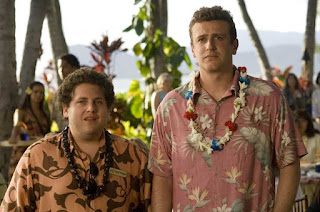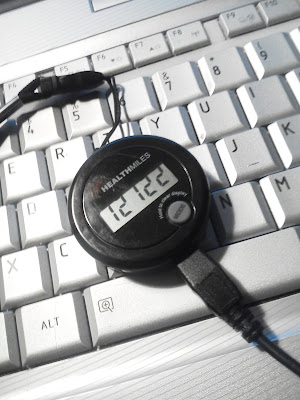Panmunjom.
Panmunjom, located in Gyeonggi Province, is a village on the de facto border between North and South Korea, where the 1953 Korean Armistice Agreement that ended the Korean War was signed. The building where the armistice was signed still stands though it is on the northern side of the Military Demarcation Line, which runs through the middle of the Demilitarized Zone. It is considered one of the last vestiges of the Cold War. It should not be confused with the Joint Security Area (JSA) nearby, where discussions between North and South still take place in blue buildings that straddle the Military Demarcation Line.
One of the strangest, most sobering experiences of my life occurred on Tuesday.
 Tuesday was the day of our DMZ tour. First of all, it's hard to wrap your head around that part: they take tours to the demilitarized zone. Yes. Buses of tourists go to the only quietly active sort-of-neutral hot zone in the world.
Tuesday was the day of our DMZ tour. First of all, it's hard to wrap your head around that part: they take tours to the demilitarized zone. Yes. Buses of tourists go to the only quietly active sort-of-neutral hot zone in the world.
And on Tuesday, it was our turn.
It started fairly early in the day. By Mia Sorella's best estimate, it would take us an hour to get to the take-off point. We got dressed up in our business casual and hopped the subway a little before 7AM, heading for the Lotte Hotel.
Until this point, my only time in a five-star hotel was following two weeks on Chinese ethylene refineries. I was dirty, out of place, and still wearing my steel toes when I walked in. This time, we were stumbling in early in the morning, having awoken in a 200-square-foot apartment after a day spent wandering Seoul.
The Lotte is a five-star (I think) monstrosity right in the middle of Seoul, owned -- clearly -- by Lotte, a somewhat enigmatic company that sells everything from candy to real estate. If the hotel weren't intimidating enough, the clientele would probably do it.
Around eight-thirty, our well-dressed crew boarded the bus and our tour guide got to work. We had a strange bunch -- businessmen from Russia (who were always the last ones on the bus), resident doctors from Boston (my opinion of them was ... not high), a pair of guys that may have been from Denmark ... and of course, two straggler Americans with somewhat sketchy backstories. The rules were given right away: we were to take pictures only when allowed, those pictures were not to end up on the Internet, and if we weren't dressed appropriately, we would not be allowed into the joint security area.
That one -- specified several times before we got there -- was finally explained. It was a (counter-)propaganda tour: odds were good pictures would be taken of us from the North Korean side and they didn't want them to end up with any persuasive tools. A couple of people in inappropriate clothing could be used to convince North Koreans that capitalism makes it impossible to have "decent" clothing.
 |
| My feet in North Korea. Really. |
Our somewhat excitable guide gave us some background as we headed north. The DMZ is a four-mile-wide band between North and South Korea. Each country has two miles officially, and each country has one village within the DMZ; South Korea's is continuously occupied, but North Korea's "Propaganda Village" is not regularly occupied. (Although they do have a very tall flagpole.) The JSA -- Panmunjom -- is in the middle and where peace talks take place.
What I hadn't thought of until then but she pointed out was that we were doing something that Koreans weren't allowed to do. If you weren't working or on a tour, you did not see the DMZ.
At Camp Bonifas, the UN base on the southern edge of the DMZ, we were briefed, papered, and then put in a military bus with a South Korean soldier/escort for the remaining miles to Panmunjom.
It was almost eerie as we exited the bus. This was a place that had been under fire many times, both during the active war and after. This was where defectors had crossed. This was not far from the Bridge of No Return, where prisoners were exchanged after the war.
And this was in fact a hot zone, patrolled on both sides 24 hours a day.
We were shuffled through the building on the edge to the border itself, where we waited our turn to enter one of those blue buildings straddling the line under the watchful eyes of soldiers from the States and both Koreas.
For a rather short minute, I was standing in North Korea.
We were hurried back out in a similar fashion and back onto the bus (amidst increasingly excited cries from our guide to not take pictures), where we headed past the Bridge of No Return and back to Camp Bonifas.
It wasn't until we were officially distanced from the DMZ that things seemed any less tense. From our stop, we could look north over the border and see a train returning from that side over the only tracks that go into or out of the country.
 |
| C'mon, I can't be serious the whole time. |
That day would hold yet another story and a truly interesting dinner, but for right then I was still wrapping my mind around this whole experience.
And that, dear readers, was the trip to Panmunjom.


Comments